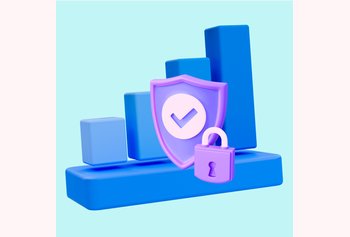8 Effective Strategies to Follow Up With Potential Clients

Table of contents
You’ve just come back from a sales meeting with a high-profile prospect, and you’ve absolutely nailed it. The prospect was blown away by your industry knowledge and how you understood their business needs.
The deal is almost sealed. All that is left is for the decision-makers to have a consultation meeting and then go ahead with your proposal.
But now you’re confused because you’re not sure how to follow up on this meeting. You’re afraid you might mess up the deal. But you want this company on board.
If the above sounds like you, you’re not alone.
Studies indicate that almost 80% of sales leads require at least 5 follow-ups after the initial sales meeting. But nearly 44% of salespeople give up after just 1 follow-up or forget to follow up altogether.
On the other hand, there are sales reps who bombard their prospects with follow-up emails and calls. Most of them never manage to seal the deal.
In this article, we’ll take you through:
- Why sales follow-ups are important
- 8 best strategies on how to follow up with potential clients
- Some email examples and templates to follow up with potential clients
Table of Contents
- Key Takeaways
- 8 Best Ways to Follow Up with Potential Clients
- 3 Sample Emails to Follow up with Potential Clients
- Wrapping it up
- FAQs
Key Takeaways
- Effective Sales Follow-Up Strategies: The article highlights the importance of strategic follow-ups in sales, emphasizing that 80% of sales leads need at least five follow-ups post-initial meeting.
- Understanding Client Preferences: It stresses the importance of asking clients about their preferred method and timing for follow-ups to respect their schedule and maintain engagement.
- Action Items and Prompt Follow-Ups: Setting clear next action items and following up on the same day as the meeting is advised for keeping the lead warm and ensuring clarity in communication.
- Providing Value Beyond Sales: Offering additional advice, resources, and solutions to client problems, irrespective of your product, can build trust and keep you in contact with prospects.
- Utilizing Social Media Platforms: Leveraging LinkedIn and Twitter for connecting and engaging with prospects is recommended, utilizing tools like LinkedIn InMail for direct contact.
- Email Sequence and Timing: Implementing an effective email sequence, with timely follow-ups and reminders, is crucial for maintaining momentum in the sales process. Bonus: incorporate SMS into your email follow-up process via a mass text message application for an even greater chance of success.
- Focus on Delivering Value in Follow-Ups: Each follow-up should offer value to the prospect, focusing on their needs and interests rather than being overly sales-oriented.
- Patience and Professionalism: Maintaining patience and professionalism, understanding that the prospect doesn’t owe you anything, is key for long-term relationship building.
8 Best Ways to Follow Up with Potential Clients
Here are a few strategies for following up without irritating your prospects.
1. Ask for the Best Way To Follow Up
When you are in a sales discussion with a prospect, you need to understand that you’re trying to create a win-win situation. The client needs your services, and you need the business. So there’s no need to feel guilty in sending sales follow-ups.
In fact, the best way to create a win-win scenario is by simply asking the best time and mode of follow-up right after your first discussion. Your prospects are busy people, and they’d appreciate it if you show concern for their time.
“I understand the value of your time, so I’d like to know what’s the best way to reach you and when can we discuss this in more detail?”
Recommended Reads:
Ultimate Guide to Customer Follow-up (Free Email Templates Included)
12 Types of Customers and How to Deal With Them
Complete Guide to Customer Relations: Importance, Types, and Strategies
2. Determine the Next Action Items
A sales meeting, no matter how successful and effective, without clear action items, often goes to waste. Before you conclude your meeting, try to come up with at least one clear action item. You can use this to not only keep the client interested but also give you a way to stay in touch with the lead.
The action item can be anything from a higher management meeting to a more detailed product brief. It needs to be time capped or at least have an approximate schedule.
You can’t, of course, push the client to make a decision in the first meeting, but you do need to extract something that both you and the client can look forward to.
3. Get in Touch the Same Day
Intelligent follow-ups at the right times can have a very powerful impact on your prospective clients and keep you at the top of their minds.
Make sure you get in touch with the client on the same day as your first meeting. In my experience, a short thank you email, which includes the meeting minutes and the key action items, along with their approximate deadlines, works really well.
This achieves two objectives:
- It clearly communicates your understanding of the meeting to the client. So if they have a different understanding of one or more issues, they can immediately clarify.
- It implicitly communicates your understanding of what the next action item is going to be.
4. Build Confidence By Offering Free Advice and Resources
Following up doesn’t always have to be sales oriented. In fact, in most of your initial meetings, the focus should be on resolving the client’s problems and fulfilling their needs instead of closing the deal.
You can do that by offering additional advice on how the prospect’s problems can be resolved effectively. Forget your product; just offer solutions that can create an immediate impact. Send them research articles, eBooks, whitepapers, or other resources that can improve their understanding of the issue.
All of these confidence-building measures not only get you in the prospect’s good books but also keep you in touch with them and help you nurture the lead.
5. Connect on LinkedIn and Twitter
Almost every business professional has a LinkedIn profile these days. It’s such an effective tool for B2B sales professionals that almost 80% of all B2B sales leads generated from social media come from LinkedIn. Twitter, on the other hand, is a great place to learn about your prospect’s interests.
B2B sales outsourcing companies often leverage LinkedIn tools to build relationships with today’s buyers.. Using LinkedIn‘s advanced search feature, they can find people who fit their buyer persona and begin engaging with them in various ways.
Connect with them on LinkedIn, study their profile, and engage them in discussions where you can demonstrate your functional expertise. For more efficiency, you can learn how to automate Linkedin outreach to streamline your outreach and follow-up processes.
The Inmail feature of LinkedIn is especially useful for sales professionals. You can use it to approach potential prospects directly. LinkedIn has also launched LinkedIn for Sales Professionals, which provides specific follow-up tools to stay in touch with your target clients more effectively. Remember, it’s not just about sending connection requests; it’s essential to genuinely network on LinkedIn, fostering meaningful relationships that can lead to fruitful business opportunities in the future.
6. Create Follow-Up Triggers
Most sales teams adopt some kind of follow-up email sequences or triggers that are applied at different stages of the lead nurturing cycle. While the selection of follow-up modes largely depends on the preferences of your clients, I generally find the following sequence applicable to most businesses.
- Thank you email after the initial sales meeting, along with the meeting minutes and action items.
- Sales follow-up email 24 hours before the deadline for the next action item, seeking acknowledgement.
- In case of no acknowledgement from the prospect, send an SMS/call for confirmation (depending on the prospect’s preference).
If none of these work, then give your client a break. They might be busy with something more important or urgent. In this case, send a follow-up email a day after the missed action item, and inquire when the meeting can be rescheduled. You can also automate this process using an email sequence software.
Similarly, the frequency of emails can also vary depending on the time duration between different milestones/action items. For example, if there’s more than one month between two action items, send a fortnightly follow-up email with a reminder of your previous conversations.
Did you know:
Implementing structured follow-up strategies can increase the conversion rate of potential clients by up to 50%, highlighting the crucial role of consistent and personalized communication in successful sales processes
7. Offer Value in Every Follow-Up
Your follow-ups should never be self-centered and product focused. Your real objective is to deliver value and build trust with the prospect. Your conversations should be so valuable that the client should look forward to having a chat with you.
This is only possible when you study your prospects closely, understand their current problems, and initiate discussions that are actually valuable to them (and not only you). Offer new ideas and tell them about your client’s success stories.
And even if, for some reason, you fail to reach a win-win with the prospect and they decide to turn down your offer, be gracious enough to offer them advice and refer them to the right people who can help.
8. Don’t Push – The Client Owes You Nothing
Follow-ups are often exhausting and can eat up a lot of time. But that is no reason to show frustration and anger at your prospective clients. Don’t push them into making any decisions. They don’t owe you anything. They’re running a business, and their decisions will be based on their own interests, not yours.
No matter how slowly the whole process moves, you need to be patient and consider it a part of your job. This way, even if you fail to win business, you’d still have a long-term professional relationship that can be leveraged in the future.
3 Sample Emails to Follow up with Potential Clients
Below are some sample emails to follow up with potential clients. Remember to personalize them based on your specific situation and the client’s needs.
1. Sample Follow-Up Email after Initial Contact
Subject: Re: Our Conversation and Potential Collaboration
Dear [Client’s Name],
I hope this email finds you well. I wanted to express my gratitude for our conversation last [date/day]. It was a pleasure learning more about your business and the challenges you are facing.
As we discussed, I believe our services can greatly benefit your company by [mention specific ways your services can add value]. Our team is dedicated to delivering exceptional results and providing tailored solutions to help you achieve your goals.
I wanted to inquire if you had any further questions or if there’s anything specific you’d like us to address in our proposal. We would be more than happy to customize our approach to suit your unique requirements.
Please let me know if you would like to arrange a follow-up call or if you have any specific preferences regarding communication. Our team is flexible and ready to accommodate your schedule.
Looking forward to the possibility of working together. Thank you for considering our services.
Best regards,
[Your Name]
[Your Title/Company]
[Your Contact Information]
2. Sample Follow-Up Email after Sending Proposal
Subject: Follow-Up on Our Proposal – [Project/Service Name]
Dear [Client’s Name],
I hope this email finds you well. I wanted to follow up on the proposal we sent last week regarding [project/service name]. We are thrilled about the potential opportunity to collaborate with your esteemed company.
I trust you had a chance to review the proposal thoroughly. If you have any questions, require further clarification, or need adjustments to meet your specific needs, please don’t hesitate to reach out. We are committed to tailoring our approach to ensure it aligns perfectly with your objectives.
Our team is enthusiastic about contributing our expertise and passion to help your business achieve success. We are confident that our proposal captures the essence of how we can create a meaningful impact and deliver exceptional results.
Please let me know if you have any feedback or if you’d like to discuss the proposal in more detail. We are available for a call or meeting at your earliest convenience.
Best regards,
[Your Name]
[Your Title/Company]
[Your Contact Information]
3. Sample Final Follow-Up Email
Subject: Last Outreach – Potential Collaboration
Dear [Client’s Name],
I hope this email finds you in good health. As this is the third follow-up regarding our proposal for [product/service], I understand that circumstances might have changed, or your priorities may have shifted.
I wanted to extend my gratitude for considering our offer and taking the time to discuss the potential collaboration. If there’s anything we can do to address any hesitations or concerns, please let me know.
While I don’t want to be pushy, I genuinely believe that our partnership could yield significant benefits for your [business objective/goal]. However, if it seems that the timing isn’t right at the moment, I completely understand.
Either way, I’d appreciate it if you could let me know your decision, so I can follow up accordingly.
Thank you for your time and consideration. I wish you continued success and hope to connect again in the future.
Best regards,
[Your Name]
[Your Title/Company]
[Your Contact Information]
Remember, in follow-up emails, it’s essential to be polite, professional, and respectful of the potential client’s time. Always address any concerns they might have and demonstrate your enthusiasm for the possibility of working together.
Wrapping it up
Follow-ups are a crucial part of any sales cycle. But effective follow-ups go beyond just repetitive calling and automated emails. The most successful salespeople make their follow-ups valuable for their prospects and implicitly demonstrate strong industry knowledge and a deep understanding of the problems at hand.
By approaching your prospects with a “I’m-here-to-help-you” strategy, you can not only make follow-ups much more effective but also use them to build long-term business relationships.
FAQs
- Why are sales follow-ups important?
- Sales follow-ups are crucial as they keep the lead engaged, clarify misunderstandings, and increase the chances of closing a deal.
- What is the best time to follow up after a sales meeting?
- It’s recommended to follow up on the same day as the meeting to recap discussions and confirm next action items.
- How can I follow up without annoying the prospect?
- Ask for the prospect’s preferred communication method and timing, and provide value in your follow-ups rather than just pushing for a sale.
- Is it effective to use social media for sales follow-ups?
- Yes, platforms like LinkedIn and Twitter can be effective for building relationships and engaging with prospects.
- How often should I follow up with a potential client?
- The frequency should be based on the agreed next action items and the prospect’s preferences, with a balance to avoid being overly persistent.

































